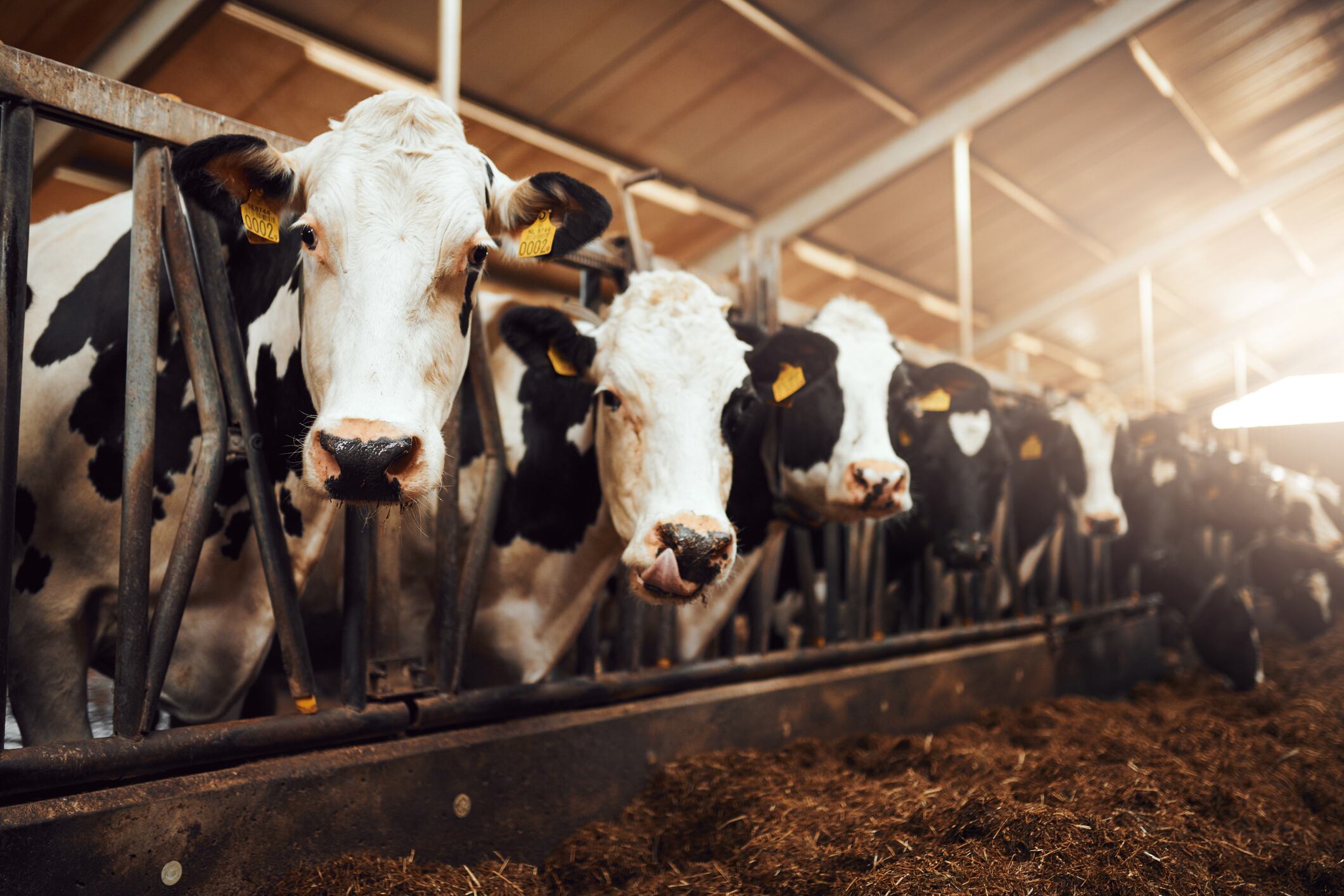Losses of around 900kg per cow were observed over a two-month period by Cornell University researchers who also estimated financial losses of more than half a million dollars for the entire herd.
The study, featured in Nature Portfolio (see ‘sources’ below for more information), examined how a bird flu (HPAI H5N1) outbreak impacted an Ohio dairy herd of about 3,900 milking cows over the course of 67 days (March 19 to April 11, 2024).
It found that the disease infected 20% of the herd (777 animals), with nearly 600 cows (around 76%) becoming infected without symptoms.
Cows who showed symptoms had a higher chance of death and were 3.6 times more likely to be removed from the dairy herd.
The study authors used individual animal data from the farm’s management system to perform the analysis, which estimated total farm losses amounting to $737,500.
The first clinical case on farm was observed around two weeks (13 days) after an apparently healthy cow brought in from Texas had been introduced into the herd.
After that, new cases were recorded each day for 3 weeks, with a peak incidence 10 days after the first infection.
Decreased feed intake and milk production were the two major giveaways that an animal had the potentially deadly virus, the authors stated.
“Our analysis demonstrates that at the herd level, declines in rumination time and daily milk production occur within 7 days of identifying the first clinically affected animal. However, when examining adjusted individual animal means…, we observed that both parameters begin to decline approximately 5 days before clinical diagnosis.”
This highlights the importance of farm monitoring systems to catch early warning indicators of the virus, the authors added.
Higher risk of death for multiparous cows
The research also found that multiparous cows had a higher risk of clinical disease compared to first-lactation cows or dry cows.
But the most striking findings were to do with the scope and duration of milk production losses in affected cows.
Two weeks after infection, milk production dropped by almost three fourths (73%, or around 35 kg per day to 10 kg per day).
“The observed reduction in milk production represents a pronounced decrease in milk yield, even when compared to other common bacterial clinical mastitis, in which milk losses up to 18 kg have been reported,” the authors reported.
The bird flu-stricken milk cows did not return to their pre-infection production levels in the 60 days after being diagnosed, resulting in a total loss of 901.2kg of milk per cow over the period.
“This persistent milk loss could be overlooked when only examining herd-level milk production where, after the initial introduction of H5N1 poorly performing cows are replaced and the bulk tank recovers,” the authors stated.
“In our investigation, we were able to prospectively follow individual cows with daily milk production recording allowing us to estimate the individual cow milk losses with some granularity. In turn, this allowed us to more accurately estimate the economic losses due to lost milk production when a cow experiences a case of influenza.”
‘The true cost is likely even higher’
While the researchers estimated the overall cost per case to be around $950 ($737,500 for the entire herd), the authors stated that the true cost could be higher, ‘if one were also to account for on-going reproductive adjustments, disruptions to milking time and other important labor considerations, supportive medical care for sick cows, changes in biosecurity, and other unmeasured factors’.
In conclusion, the authors stated: “Although our study focused on a single herd it is one that is typical of a total-mixed-ration-fed, free-stall herd, and thus these results demonstrate the significance of an influenza A H5N1 virus outbreak in affected farms.
“It is important to note that differences in farm style, geographic region, or management practices may result in higher or lower economic losses to affected farms.
“Nonetheless, our findings highlight the high impact of influenza A H5N1 virus to the US dairy industry, as the virus continues to circulate and cause economic losses to dairy producers, posing an increased risk to animal and public health.”
Source:
The impact of influenza A H5N1 virus infection in dairy cowsAuthors: Felipe Peña-Mosca, Elisha A. Frye, Matthew MacLachlan et al. Published: March 3, 2025, PREPRINT (Version 1) available at Research Square

